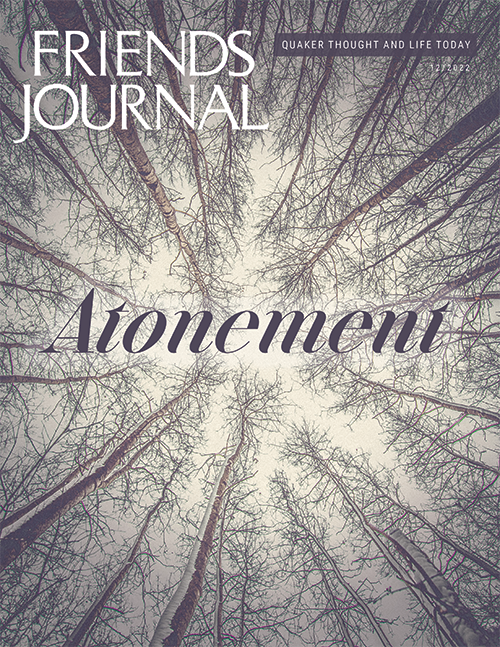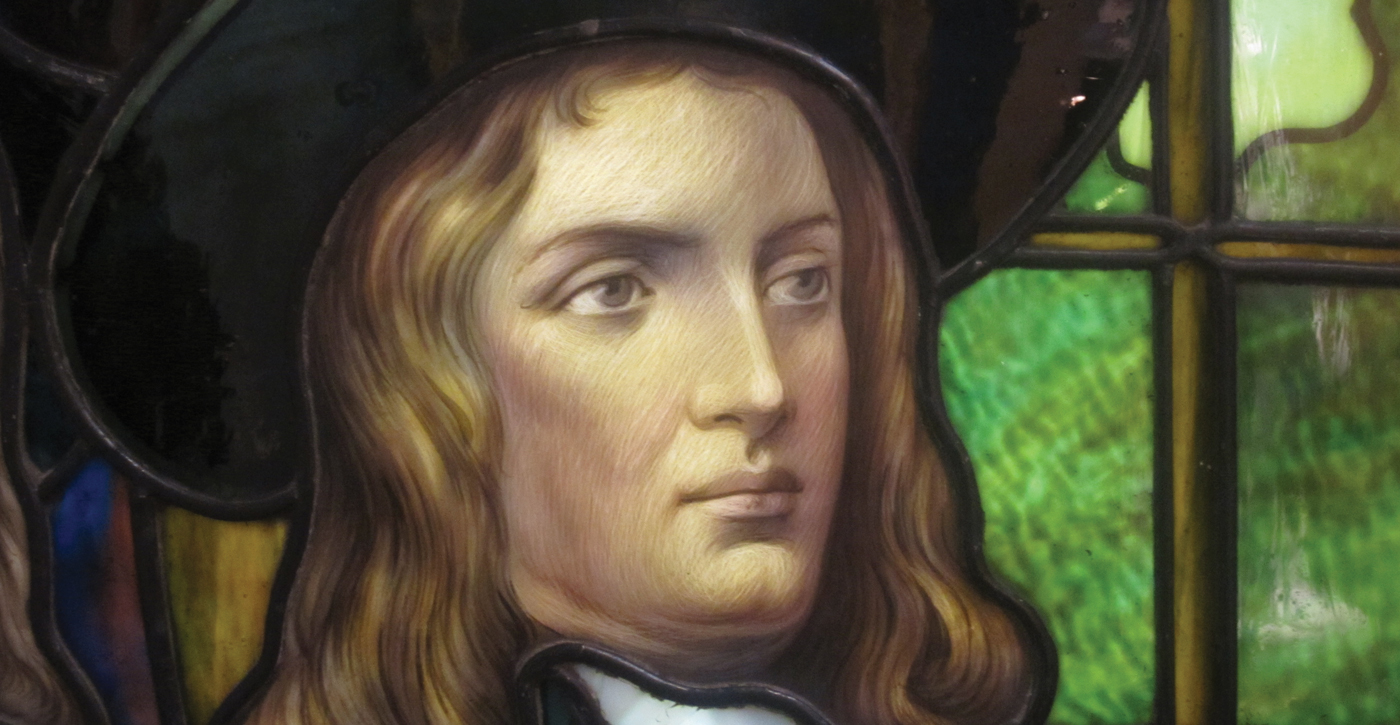The benevolence of Quaker artists
Can we detach the blistering, intense energy of a Van Gogh painting from his stalking and psychosis (“Let Your Art Speak” by Blair Seitz, FJ Sept.)? Or Wagner’s music from his megalomania and antisemitism? Picasso from his misogyny? Plato’s transcendent awareness from his snobbery? I think the answer may challenge our capacity for forgiveness and vision.
What I feel is different about Quaker art has to do with the person of its creator, and their manifest benevolence.
Rob Dreyfus
Swarthmore, Pa.
Expanding creativity
During the worst days of COVID, I had time to create some Quaker music (“The Absence of Art or the Art of Absence?” by Keith Barton, FJ Sept.). My inspiration was a wonderful married couple at our meeting in Orlando, Fla., Liz and Ray Jenkins. Liz was our wonderful clerk, and Ray was a prominent contributor to our meeting’s activities. To me, Liz and Ray were modern counterparts of George Fox and Margaret Fell (Fox). My project became a music video dedicated to Liz and Ray. I titled it The George & Margaret Suite. In seven scenes, it traces the couple’s relationship over nearly two decades. The suite can be seen and heard at youtu.be/D5S26SCM2y8.
Gary Evans
Winter Springs, Fla.
I am enjoying the discussion around Barton’s article, in part because I am challenged by the very narrow representation of both art and Quaker in Keith’s initial article. It is very easy to interpret one historical era in terms of another to then find one of them lacking. This misses the role of creativity in Quaker history, community, and self-expression. I note Quakers are historically very strong in written representations of their spirituality (and of the Divine in particular), and many have been famous artists per se. Many have been creative in other ways. I also note there is no discussion of art as a discipline in its own right. It would be useful to scope, for example, the role of spirituality in contemporary art. This might bring us to quite a different view of art in relation to the commandment.
Stephen
Auckland, New Zealand
Experience of death
My sister showed me how to die (“Touched by Death and Dying” by Marcelle Martin, FJ Oct.). Though she’d been diagnosed with cancer, chemotherapy seemed to be working. Then my daughter told me Susan was suddenly seriously sick.
Seven hours later I walked into Susan’s hospital room. She was staring at blotches on her wrists and palms, but recognized and greeted me as I bent down to her tired face. Susan’s demands were simple: “If I can’t get well, I want to go home.” The hospice set up a bed looking out at the backyard she loved, planning to take her there next morning.
But she slipped into a coma on the third night. Next morning our elderly mother sat beside Susan’s bed, holding a blackened hand, reminiscing through tears. I told Susan that I loved her, and, recalling Buddhist and Quaker teachings, urged her to trust in the universe and seek out the bright light. I quoted her own words, “Remember, it’s all good.”
That day she died.
Her passing hurt awfully, and still does. But though the image that comes first to mind is of holding her cold, blackened hand and looking into eyes that would never reopen, that image always fades into memories of hugs and tears, of love sparkling through tears. Susan would be pleased at such a legacy, knowing she showed us it is, indeed, “all good.”
Name withheld by request
Jim Crow then and now
I grew up under Jim Crow as a Southerner, but I naively thought we were farther along, until the horror and tragedy of 2017 ensued (“Say His Name” by Anthony Manousos, FJ Oct.). As overwhelming as racism seems when it rears its ugly head, we can’t afford anything except to pledge eradicating it wholly and permanently.
Leslie Saunders
Huachuca City, Ariz.
Can you imagine what it was like in the ’30s, ’40s, and ’50s? I am 84, and over 5,000 Black folks were lynched in my lifetime. There is a very moving memorial in Birmingham, Ala. I would like to see it travel all over like the Vietnam wall.
I was influenced by Barbara and Earle Reynolds, who were the parents of my friend Tim Reynolds, when we lived near Hiroshima, Japan, after the bomb. They (converted Friends) sailed The Dove worldwide and into atomic bomb testing sites.
Jack Fennig
Dallas, Tex.
Expressing feelings and conflict
I really loved Johanna Jackson’s “Beyond Politeness” (FJ Oct.). I also got a lot out of her “author chat” YouTube conversation with Friends Journal editor Martin Kelley. In it, they discussed the difficulty of changing the conflict avoidance that too often runs through the culture of Quakerism.
I can think of one thing that may help create a Quaker culture where disagreement is not avoided. It is something I saw George Lakey do after a presentation. Instead of simply asking for questions, he said that he wanted to hear the ways people disagreed with what he had presented. He wanted to hear criticism. It was clear that he valued that kind of conversation.
If just one person demonstrates an alternative, then people can see that there is an alternative, and they are more likely to embrace change. If we started ending things such as adult education presentations (just to name one possibility) with a call for disagreement and criticism, it would send the message that the expression of different and even conflictual views are welcome and even valued in the community.
Don McCormick
Grass Valley, Calif.
Many of the comments about an hour of silence not being the ideal medium for building community or feeling safe and not capable of expressing our—my—pain and other feelings ring very true for me. Although I’ve attended Quaker things off and on for decades, I look to my long-term Alcoholics Anonymous community for a place to express feelings and get listening and understanding and spiritual connection in return.
Tree Abbott
Sunderland, Mass.





Comments on Friendsjournal.org may be used in the Forum of the print magazine and may be edited for length and clarity.